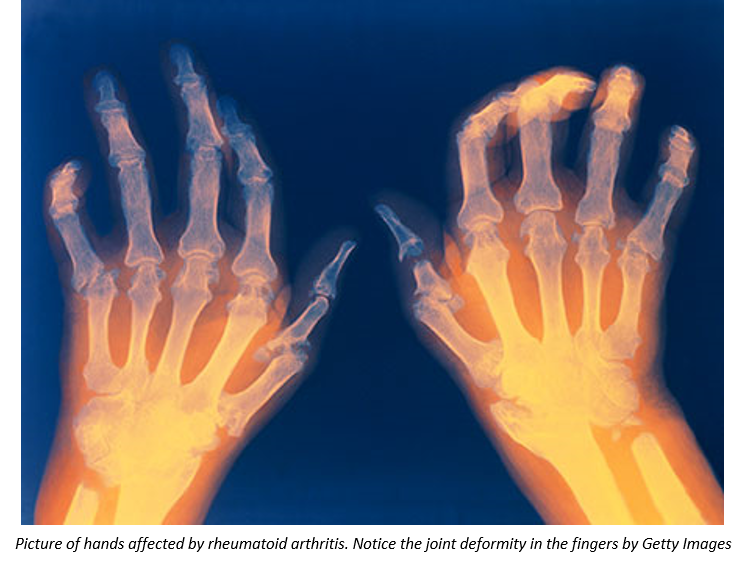FRRB 2015-010 - Single-cell analyses of lymphocytes that infiltrate autoimmunity sites: dissecting immunological mechanisms of rheumatoid arthritis
|
Pathology of interest: |
Reumathoid arthritis |
|
Area of research: |
Immunology and Infection |
|
Start date: |
January 2017 |
|
End date: |
November 2020 |
|
Funding: |
€ 3.964.800 |
|
Project partners: |
IRCCS Istituto Auxologico – leading partner Università degli Studi di Milano Ospedale San Raffaele SRL CNR - Istituto di Tecnologie Biomediche Nerviano Medical Sciences SRL |
BACKGROUND
Reaumathoid arthritis (RA) is a chronic autoimmune disease which affects between 0.5% and 1% of adults in the developed world. Among the osteoarticular diseases, rheumatoid arthritis represents the most severe one in terms of joints structural damage, secondary bone damage, extra-articular complications, associated comorbidities and mortality risk.
This disease affects prevalently females with a female/male ratio of 3-4:1 of an age between 40 and 60 years old, even if it can occur at all ages.
Reaumathoid arthristis has a strong impat on the quality of life of affected patients, as it causes:
- Chronic pain
- Joint deformity
- Impossibility of definitive healing
- Continuous therapy
- Difficulties in social life
- Loss of autonomy
- Anxiety and depression

PROJECT AIMS AND DEVELOPMENT
The aim of this project is to:
- Understand the mechanisms of disease development
- Discover new therapeutic targets for the development of new therapies
- Identify markers that allow to define whether or not a patient will respond to a certain treatment in order to use a more personalized therapeutic approach.
The project will be developed as follows:
scientists will recruit and phenotipically characterize more than 100 subjects. They will extract immune cells from the sinovial fluid of RA patients and perform a single cell transcriptomic analysis as well as an analysis of the epigenetic modifications that might be associated with the disease onset and development. Obtained data will be analysed by bioinformatics and statisticians that will find therapeutic target candidates. These last will be tested in RA animal models and validated for potential therapeutic startegies development.
ACHIEVED RESULTS
|
Title |
Journal |
Year |
IF |
|
Spatial reconstruction of immune niches by combining photoactivatable reporters and scRNA-seq |
Science |
2017 |
41,06 |
|
The Pathophysiological Relevance of the iNKT Cell/Mononuclear Phagocyte Crosstalk in Tissues |
Frontiers in Immunology |
2018 |
4,68 |
|
Characterization of multi-locus imprinting disturbances and underlying genetic defects in patients with chromosome 11p15.5 related imprinting disorders |
Epigenetics |
2018 |
4,17 |
|
Speeding Up the Identification of Cystic Fibrosis |
Molecules |
2018 |
3,11 |
|
Gene relevance based on multiple evidences in complex networks |
Bioinformatics |
2019 |
5.61 |
|
Isma: an R package for the integrative analysis of mutations detected by multiple pipelines |
BMC Bionformatics |
2019 |
3,24 |
|
Comprehensive kinome NGS targeted expression profiling by KING-REX |
BMC Genomics |
2019 |
3,59 |
|
OligoMinerApp: a web-server application for the design of genome-scale oligonucleotide in situ hybridization probes through the flexible OligoMiner environment |
Nucleic Acids Research |
2020 |
11,50 |
|
Spatiotemporal regulation of type I interferon expression determines the antiviral polarization of CD4+ T cells |
Nature Immunology |
2020 |
20,48 |
|
Network Diffusion Promotes the Integrative Analysis of Multiple Omics |
Frontiers in Genetics |
2020 |
3,65 |
|
Exploiting CD1-restricted T cells for clinical benefit |
Molecular Immunology |
2021 |
8,48 |
|
Characterization and comparison of gene-centered human interactomes |
Briefings in Bioinformatics |
Under review |
|
LAY ABSTRACT
Il progetto LYRA ha lo scopo di identificare nuovi marcatori per la diagnosi e la terapia dell’artrite reumatoide (AR). L’approccio è di traslare alle malattie autoimmuni ciò che è stato fatto in oncologia, cioè la caratterizzazione delle cellule infiltranti il tessuto bersaglio in parallelo a quelle circolanti. Nel caso della AR l’analisi è a livello del tessuto sinoviale articolare sede di una sinovite specifica. Sono stati inclusi pazienti affetti da AR e come gruppi di controllo soggetti sani e pazienti affetti da patologie articolari infiammatorie non AR (lupus eritematoso sistemico) e patologie articolari degenerative (osteoartrosi - OA). Il progetto ha arruolato pazienti in terapia (con farmaci sintetici e/o biologici) ma anche pazienti con AR iniziale e privi di terapie immunomodulanti aggressive al fine di valutare le variabili legate alla terapia in atto o meno.
I leucociti mononucleati circolanti ed infiltranti la sinovia sono stati caratterizzati da un punto di vista immunologico come marcatori fenotipici e come trascriptoma a livello di single cell analysis. La ricerca di marcatori è stata inoltre condotta a livello genetico ed epigenetico e sono state analizzate le vie di attivazione molecolare (i.e. chinasi) che recentemente rappresentano un nuovo bersaglio terapeutico. Dal momento che il microbioma è noto per giocare un ruolo patogenetico nella AR, è stato indagato il microbioma fecale e salivare in pazienti con AR ed in controlli patologici con OA. L’analisi è stata condotta longitudinalmente e correlata ai trattamenti.
LYRA è un progetto di ricerca traslazionale unico nel suo genere che coinvolge strutture di natura diversa e con expertise complementare. E’ in corso l’analisi bioinformatica dei dati accumulati.

